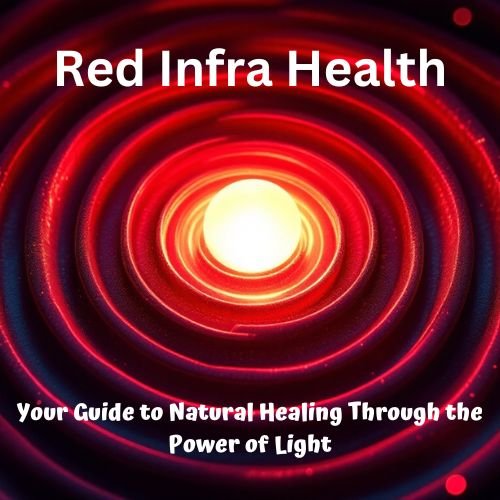Red light therapy provides Hashimoto's patients with several key benefits that can enhance your overall health. First, it boosts cellular energy production, improving your vigor by regenerating thyroid cells. It also reduces inflammation, greatly lowering thyroid antibody levels. Improved blood circulation guarantees your thyroid gets adequate oxygen and nutrients, further aiding function. Additionally, it balances hormone regulation to help maintain healthy T3 and T4 levels, minimizing the need for synthetic hormones. Finally, it strengthens your immune system, promoting faster recovery from autoimmune attacks. If you're curious about how these benefits can transform your health, there's more to explore!
Enhanced Cellular Energy Production

Enhancing cellular energy production is fundamental for Hashimoto's patients looking to improve their overall health. Red light therapy targets your mitochondria, the energy powerhouses of your cells, considerably boosting adenosine triphosphate (ATP) production—the energy currency of cellular functions.
This therapy increases your energy levels by enhancing cellular activity and efficiency, allowing your mitochondria to function ideally. It helps prevent energy production shutdown by releasing nitric oxide from mitochondrial enzymes, alleviating fatigue and sluggishness.
In thyroid cells, red light therapy plays a significant role by regulating the hormones your body needs. It regenerates thyroid follicular cells, improving your T3 and T4 hormone production. Additionally, studies show that it can lead to a significant reduction in thyroid antibody levels, which is pivotal for managing autoimmunity.
This enhanced mitochondrial function not only aids in hormone balance but also supports the repair of damaged thyroid cells.
Clinical studies have shown promising outcomes, with some patients reporting improvements so considerable that they no longer require thyroid hormone medication. Additionally, many individuals felt increased energy levels and relief from symptoms tied to hypothyroidism, such as weight gain and metabolic challenges.
Embracing red light therapy could be an essential step in revitalizing your cellular energy and managing your Hashimoto's effectively.
Reduced Inflammation Levels
Red light therapy offers a powerful approach to reducing inflammation levels in Hashimoto's patients. By interacting with biological structures, it enhances anti-inflammatory responses and reduces oxidative stress, which is particularly beneficial for autoimmune conditions like yours. The therapy triggers nitric oxide release, helping dilate blood vessels and lower inflammation. Additionally, recent studies have highlighted that long-term levothyroxine treatment is typically required post-diagnosis, further emphasizing the importance of supportive therapies.
Here's a quick look at how red light therapy can impact your inflammation levels:
| Mechanism | Benefits | Clinical Evidence |
|---|---|---|
| Reduces oxidative stress | Lowers inflammation | Reduced thyroid antibody levels |
| Enhances tissue repair | Improves thyroid function | 600-point drop in thyroid antibodies |
| Modulates immune activity | Decreases autoimmune attacks | 30-50% could stop thyroid meds |
| Increases antioxidants | Neutralizes free radicals | Better outcomes with therapy + diet |
| Improves overall well-being | Balances T3 and T4 production | Lasting effects up to 11 months |
Red light therapy not only alleviates symptoms but also supports the regeneration of damaged thyroid tissue, helping you regain balance in your thyroid hormone levels. You might find that the positive effects greatly enhance your overall well-being.
Improved Blood Circulation

Improved blood circulation plays an essential role in supporting your thyroid health, especially for those managing Hashimoto's. Red light therapy enhances vasodilation, leading to wider blood vessels and increased blood flow. This boost in circulation guarantees that your thyroid gland receives ample oxygen and nutrients, which are vital for peak hormone production.
When blood flow improves, nitric oxide is released, promoting further dilation and creating a healthier environment for your thyroid tissue. Better circulation reduces the risk of ischemia, promoting repairs to any damaged areas and helping maintain homeostasis in your thyroid function. You might notice a decrease in symptoms related to Hashimoto's as your gland operates more smoothly. Studies suggest that PBM therapy can also improve the T3/T4 ratio, decrease the need for hormone replacement therapy, and lead to lower levels of TSH and thyroid antibodies. This means you could experience a better quality of life and even manage your weight more effectively.
Ultimately, red light therapy can provide the support your thyroid needs by making sure it stays nourished and healthy through enhanced circulation.
Balanced Hormone Regulation
With better blood circulation fostering your thyroid's health, balancing hormone regulation is the next critical step for those with Hashimoto's. Red therapy can greatly enhance mitochondrial function within your thyroid cells, leading to increased ATP production. This boost helps your thyroid produce and regulate hormones effectively, ensuring you maintain healthy levels of T3 and T4. A balanced hormone profile can alleviate symptoms of both hypothyroidism and hyperthyroidism, enhancing your overall metabolic rate and energy levels.
Additionally, red therapy reduces inflammation in the thyroid gland, which is particularly beneficial for autoimmune conditions like Hashimoto's thyroiditis. By decreasing inflammation, it promotes tissue repair and regeneration, ultimately supporting your thyroid's health. This regulation may also minimize your dependency on synthetic hormone replacement therapy.
As your thyroid calls the shots for your hormone levels, maintaining stability in these areas can transform your wellbeing. You'll likely experience better energy levels and an improved quality of life. Staying proactive about hormone regulation paves the way for structural and functional resilience in your thyroid, bringing you closer to a more balanced and vibrant state of health.
Strengthened Immune Function

While managing Hashimoto's, strengthening your immune function is vital, and red therapy offers a powerful tool for achieving that. This innovative therapy boosts cellular energy and enhances your immune response, making it easier for your body to fend off illnesses.
Here are three key benefits of red therapy for immune function:
- Boosts Cellular Energy: Red therapy increases ATP production in mitochondria, energizing your cells, including immune cells. Enhanced cellular energy supports better cellular function and repair.
- Increases Lymphocyte Activity: Red and infrared light encourage lymphocytes to become more active, enabling them to respond effectively to foreign invaders. Improved lymphocyte activity enhances antibody creation, bolstering your body's overall immune response.
- Reduces Inflammation: This therapy reduces oxidative stress and lowers inflammation, which is particularly important for autoimmune conditions like Hashimoto's. As inflammation subsides, your body can repair tissues more efficiently, speeding up recovery.
Incorporating red therapy into your routine can greatly improve your immune function, helping you feel stronger as you manage Hashimoto's.
Frequently Asked Questions
Are There Any Side Effects of Red Therapy for Hashimoto's Patients?
Red light therapy generally doesn't have significant side effects when used properly, though eye damage is possible without protection. It's crucial to follow instructions and consult your healthcare provider to guarantee safe usage.
How Long Does It Take to See Results From Red Therapy?
You'll notice initial results from red therapy within a few sessions, but significant changes typically appear in 2-3 months. Be patient, as consistent treatment leads to better thyroid function and overall improvements over time.
Can Red Therapy Replace Medication Completely for Hashimoto's?
Red therapy can't completely replace medication for everyone. It may reduce the need for thyroid meds in some cases, but results vary. Regular monitoring and a healthcare provider's guidance are essential for safe management.
How Often Should Hashimoto's Patients Undergo Red Therapy Sessions?
You should aim for red light therapy sessions 2-3 times a week, lasting 10-20 minutes each. Consistency is essential, and you might notice initial improvements within a few months of adhering to this schedule.
Is Red Therapy Safe for Pregnant or Breastfeeding Women With Hashimoto's?
You should consult your OB/GYN to determine if red light therapy is safe for you during pregnancy or breastfeeding. While there aren't major concerns, it's essential to guarantee monitoring and proper care.
In Summary
Incorporating red therapy into your routine can lead to significant improvements if you're managing Hashimoto's. You'll likely notice enhanced energy, reduced inflammation, better circulation, balanced hormone levels, and a stronger immune system. These benefits can make a real difference in your overall well-being. Remember, it's important to consult with your healthcare provider before starting any new treatment. Embracing red therapy could be the key to feeling more like yourself again!





Leave a Reply